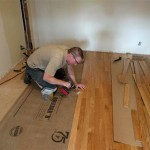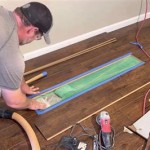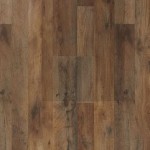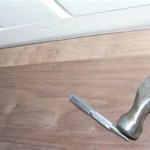Tile Flooring Designs For Kitchens: A Comprehensive Guide
Kitchen flooring endures more wear and tear than almost any other space in a home. From dropped pots and pans to spills and constant foot traffic, the kitchen floor needs to be both durable and aesthetically pleasing. Tile flooring offers a compelling combination of resilience, water resistance, and design versatility, making it a popular choice for kitchens. This article explores various tile flooring designs for kitchens, discussing different materials, patterns, and considerations to help homeowners make informed decisions.
Understanding Tile Materials: Durability and Aesthetics
The foundation of any successful tile flooring design lies in selecting the right material. Different types of tile offer varying levels of durability, water resistance, and aesthetic appeal. Common options for kitchen tile flooring include ceramic, porcelain, natural stone, and even glass.
Ceramic Tile: Ceramic tile is a cost-effective and versatile option made from clay that is fired at high temperatures. It is relatively durable and water-resistant, especially when glazed. Ceramic tile comes in a wide range of colors, patterns, and sizes, making it suitable for various kitchen designs. However, it is generally less dense and less durable than porcelain tile, making it more prone to chipping and cracking under heavy impact.
Porcelain Tile: Porcelain tile is a denser and more durable option than ceramic tile. It is also made from clay but is fired at higher temperatures, resulting in a harder, less porous material. This makes porcelain tile highly resistant to water, stains, and scratches, making it an excellent choice for high-traffic kitchens. Porcelain tile is available in a vast array of designs, including those that mimic natural stone, wood, and concrete.
Natural Stone Tile: Natural stone tile, such as granite, marble, slate, and travertine, offers a unique and luxurious aesthetic. Each stone tile is unique, with natural variations in color and pattern. Natural stone is durable and can withstand heavy use, but it typically requires more maintenance than ceramic or porcelain tile. It is also more porous and can be susceptible to staining if not properly sealed. The cost of natural stone is considerably higher than other tile materials.
Glass Tile: Glass tile is a less common but visually striking option for kitchen flooring. It is non-porous and resistant to water and stains, making it easy to clean. Glass tile can add a touch of elegance and sophistication to a kitchen, and it is available in a wide range of colors and finishes. However, glass tile is generally more expensive and less durable than other options, and it can be more susceptible to scratching.
When selecting a tile material, consider the level of foot traffic in the kitchen, the potential for spills and stains, and the overall design aesthetic. Porcelain tile is generally recommended for its combination of durability, water resistance, and design versatility.
Exploring Tile Patterns and Layouts: Enhancing Visual Appeal
The pattern and layout of tile flooring can significantly impact the overall look and feel of a kitchen. Different patterns can create different visual effects, making a small kitchen appear larger or adding visual interest to a more expansive space. There are numerous tile patterns available, ranging from classic to contemporary.
Straight Lay: The straight lay pattern is the most basic and commonly used tile pattern. Tiles are laid in a grid pattern, creating a clean and uniform look. This pattern is suitable for any tile size and shape and is especially effective for showcasing the natural beauty of stone or highlighting the color of the tiles. A straight lay pattern is easy to install and can be used in any kitchen style.
Diagonal Lay: The diagonal lay pattern involves laying tiles at a 45-degree angle to the walls. This pattern can make a small kitchen appear larger and more spacious, as it draws the eye diagonally across the room. A diagonal lay pattern also adds visual interest and a touch of sophistication. However, it requires more precise cutting and installation, which can increase the cost.
Brick Pattern (Running Bond): The brick pattern, also known as the running bond pattern, mimics the look of brickwork. Tiles are offset by half their length in each row, creating a staggered effect. This pattern is visually appealing and adds a touch of rustic charm to a kitchen. It is well-suited for rectangular tiles and can be used to create a sense of movement and flow.
Herringbone Pattern: The herringbone pattern is a classic and elegant pattern that involves laying rectangular tiles in a zig-zag pattern. Tiles are arranged at a 45-degree angle to each other, creating a visually striking and sophisticated look. The herringbone pattern is particularly effective with wood-look tiles, as it mimics the look of hardwood flooring. It is a more complex pattern to install and requires precise cutting and alignment.
Chevron Pattern: The chevron pattern is similar to the herringbone pattern but with a more distinct V-shaped design. Tiles are cut at an angle and fitted together to create a continuous zig-zag pattern. The chevron pattern is a bold and stylish choice that adds a touch of luxury to a kitchen. It requires precise cutting and installation and is best suited for larger tiles.
Mosaic Patterns: Mosaic patterns involve using small tiles, typically 1-2 inches in size, to create intricate designs. Mosaic tiles can be used to create borders, accents, or entire floor coverings. Mosaic patterns offer endless possibilities for customization and can add a unique and artistic touch to a kitchen. They are more labor-intensive to install and can be more expensive than larger tiles.
Large Format Tiles: Using large format tiles (tiles larger than 12x24 inches) can create a modern and seamless look in the kitchen. Fewer grout lines mean easier cleaning and a more streamlined appearance. Large format tiles are especially effective in open-concept kitchens, as they create a sense of spaciousness.
When choosing a tile pattern, consider the size and shape of the kitchen, the overall design style, and the desired visual effect. Experimenting with different patterns and layouts can help visualize the final result and ensure that the chosen pattern complements the kitchen's overall aesthetic.
Considerations for Kitchen Tile Flooring: Practicality and Maintenance
Beyond aesthetics, several practical considerations should be taken into account when choosing tile flooring for a kitchen. These include slip resistance, grout selection, and maintenance requirements.
Slip Resistance: Kitchens are prone to spills, making slip resistance an important factor to consider. Tiles are rated for slip resistance using a coefficient of friction (COF) rating. A higher COF rating indicates greater slip resistance. For kitchen flooring, it is recommended to choose tiles with a COF rating of 0.60 or higher. Textured tiles or those with a matte finish generally offer better slip resistance than smooth, glossy tiles.
Grout Selection: Grout fills the spaces between tiles and plays a critical role in the overall appearance and durability of the floor. Grout is available in a variety of colors and materials. Epoxy grout is a popular choice for kitchens due to its stain resistance and durability. It is also non-porous, making it resistant to water and mold growth. Cement-based grout is a more affordable option, but it is more porous and requires sealing to prevent staining and water damage. Choosing a grout color that complements the tile color can create a cohesive look, while a contrasting grout color can highlight the tile pattern.
Maintenance: Tile flooring is generally easy to maintain, but regular cleaning is necessary to keep it looking its best. Sweep or vacuum the floor regularly to remove dirt and debris. Mop the floor with a mild detergent and water as needed. Avoid using harsh chemicals or abrasive cleaners, as they can damage the tile or grout. For natural stone tiles, use cleaners specifically designed for stone to prevent damage to the finish. Sealing the grout regularly can help prevent staining and water damage.
Subfloor Preparation: The subfloor must be properly prepared before installing tile flooring. The subfloor should be clean, level, and structurally sound. Any cracks or imperfections in the subfloor should be repaired before tiling. Depending on the type of subfloor, a layer of underlayment may be required to provide a smooth and stable surface for the tile. Proper subfloor preparation is essential for ensuring the longevity and performance of the tile flooring.
Budget Considerations: The cost of tile flooring can vary widely depending on the type of tile, the size of the kitchen, and the complexity of the installation. Natural stone tiles are generally more expensive than ceramic or porcelain tiles. Intricate patterns and layouts can also increase the installation cost. It is important to establish a budget before starting the project and to obtain quotes from multiple contractors to ensure a fair price.
By carefully considering these practical factors, homeowners can choose tile flooring that is not only aesthetically pleasing but also durable, safe, and easy to maintain.
In conclusion, selecting the right tile flooring for a kitchen involves careful consideration of material, pattern, and practical factors. By understanding the pros and cons of different tile materials, exploring various patterns and layouts, and considering slip resistance, grout selection, and maintenance requirements, homeowners can create a kitchen floor that is both beautiful and functional. With proper planning and installation, tile flooring can be a long-lasting and valuable addition to any kitchen.

Top 50 Best Kitchen Floor Tile Ideas Flooring Designs Remodel For

Tile Flooring Ideas For Any Portland Kitchen Design Style

40 Latest Kitchen Tiles Design Ideas For Modular 2024

45 Fantastic Kitchen Floor Ideas And Designs Renoguide N Renovation Inspiration

Kitchen Floor Tile Ideas That Will Be Huge In 2024 Rea Tiles Flooring

7 Best Kitchen Flooring Ideas Monterey Ca Cypress Design Build

2024 Kitchen Flooring Trends 20 Ideas To Update Your Style Inc

Kitchen Floor Ideas Tiling Flooring Vinyl

Best Tile For Kitchen Floor How To Make The Right Choice

57 Inspiring Kitchen Flooring Ideas To Elevate Your Home Best For Luxury Kitchens Floor Tile
Related Posts








